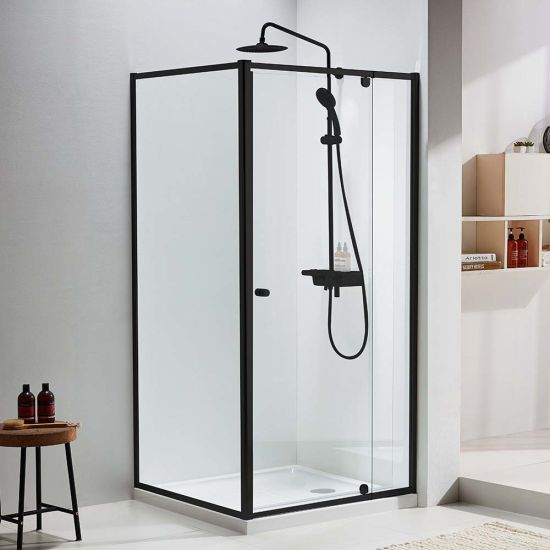Simple Guide to Installing a New Shower Unit
Simple Guide to Installing a New Shower Unit
Blog Article
We have unearthed the article involving Simple ways to Install a Shower Cubicle on Your Own directly below on the internet and accepted it made sense to write about it with you on this page.

A successful shower installment requires mindful planning and a lot of job. In most cases, you will require to do three kinds of jobs: mounting wall surfaces, mounting the plumbing, as well as finishing wall surfaces.
Prep work
Firstly, you need to decide on the kind of shower that you want to set up. It is necessary to ascertain whether the selected shower can handling particular systems as well as can control a secure degree of water via the boiler. A lot of shower devices nowadays are designed to be flexible to different water pressures (such as saved hot water and cold keys).
It is additionally important to consider the water pressure and the planning of the piping and drainage for the shower
Various Sorts Of Shower Units
Technique
Depending on the sort of shower you wish to install, the shower head have to either be suited order to prevent its contact with the water in the bath below or the base tray, or it should have a check shutoff.
Before starting, it is advisable to note the settings of the shower head and also control, and to intend the pipe-work entailed. In addition, the drain system to eliminate the waste water will need to be planned. Both settings of the cable television route as well as the shower button will certainly also need to be taken into consideration if an instantaneous or electrical shower unit is being installed.
Utilize the guideline overview given with the shower unit to fit the shower control.Before fitting the pipes that will supply the water to the shower system, it is essential to cut off the water system. In order to secure the pipelines, they need to be provided a water resistant covering and also fitted with separating valves. The pipes can after that be buried into the wall surface as well as smudged over to neaten the total appearance.
Fit the base tray, shower head, as well as fittings.
Connect the major shower control to the pipelines that will be providing the water (This might need a female screw string adapter).
Reconnect the water as well as test the pipelines for any type of leakages, as some may require tightening.
If you are mounting an electrical shower, bear in mind to switch off the electricity supply prior to making any electric connections. As soon as these connections have been made (there need to be assistance within the user's manual), the power supply can be switched over back on.
Adjusting Water Stress to Suit Your Shower
The cold water tank can be raised to a better elevation (in some cases as low as 150mm (6inches)) by installation a solid wood assistance under it - perhaps made up of struts and blockboards. If you choose this option, the main as well as distribution pipes will certainly likewise need to be increased to fulfill the new elevation of the storage tank.
Alternatively, a booster pump (a solitary pump or a dual/twin pump) can be fitted. Whichever type is chosen, it has to be attached right into the power supply in order to run.
Piping and also Drain
It is best to utilize 15mm diameter supply pipelines, as well as make the go to the shower as short and straight as feasible so regarding maintain optimal pressure and reduce heat loss. In addition, by minimising the use of joints for pipe edges, you can decrease the resistance in the circulation of the supply of water. You can achieve this by bending the pipes rather.
Most Typical Blunders
How Do You Install a Shower? Follow This Guide
Installing a Shower at a Glance
Tools & Materials: Level, electric drill, caulk, hole saw, cedar shims, shower unit Step 1: Drill pilot holes Step 2: Prep fixture holes Step 3: Move unit into place Step 4: Caulk corners and base Step 5: Attach door Step 6: Install shower pan Whenever plumbing is involved in a DIY project, people worry about what might go wrong. The truth is that installing a shower isn’t that complicated, and you can save a lot of money by doing it yourself. You shouldn’t need to make any alterations to your plumbing to complete the job, and most of the tools you need will be provided in your new shower kit.
Can I Install a Shower Myself?
Even if you’ve never installed a shower before, you’ll find this to be a project that is perfectly suited for DIYers with a moderate level of experience. Whether you're doing a bathtub conversion or installing a new stall, most of what you need comes in shower kits that you can purchase from a hardware store. The first thing you need to do is determine what type of shower stall you want.
Single-panel stalls are the easiest to install because they come preassembled. All you need to do is put them in place. Multi-panel showers require a few additional steps, but you’ve got more control over the appearance of your unit. Multi-panel units are also much easier to handle if you’re going to do the installation without any help.
Be sure to take all appropriate safety precautions, such as wearing eye protection and gloves. When you’re removing or installing a shower unit, you might kick up debris that could hurt your eyes. You’ll also need to work with equipment that will get extremely hot, so be sure to have safety gloves handy.
Tools and Materials
2- to 4-foot level Electric drill with a 1/8-inch drill bit Caulk 2-inch hole saw Cedar shims The unit itself Before You Begin: Prep the Space
It’s highly important to measure your space accurately before putting the stall in. Measuring from the floor upward and from each corner outward will ensure you’ve got the right measurements. What you’re looking for is where the plumbing apparatuses are going to come through the stall. Transfer these measurements over to the back of your unit by drawing the locations of these holes using a pencil or marker.
Pull out your old shower and make sure to scrape off all the old caulking. Be thorough because you want to work with smooth surfaces for the best installation. Once you’ve pulled out your existing shower, you need to make sure that the floor is clean and dry. The best way to clean debris is with a shop vacuum, as it’ll soak up water and dirt together.
If you’re experiencing any plumbing issues, such as low water pressure, this is a perfect opportunity to solve them. Make sure that the pipes themselves are not in need of patching and clean your showerhead. When you turn the water back on after your project, check the pipes for signs of wear or disrepair. Anything beyond minor repairs should be handled by a plumber, and this is the best time to bring in a professional.
If the floor has any moisture at all, don’t proceed until it’s completely dry. The last thing you need is for the floor to rot or invite mold and mildew into your base. Once everything is dry, apply waterproof wallboard to the walls. This can be attached with screws or nails, then sealed with caulk so that water doesn’t seep into any crevices.

As a fervent person who reads about How to Install a Freestand, I thought sharing that piece of content was worth the trouble. Sharing is good. Helping people is fun. We treasure reading our article about How to Install a Freestand.
Call Report this page